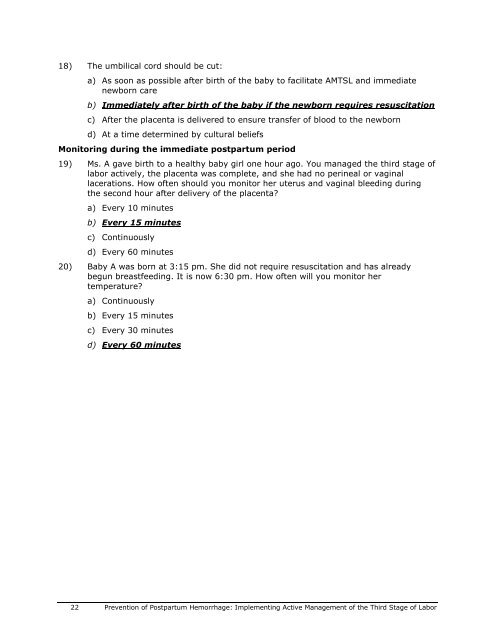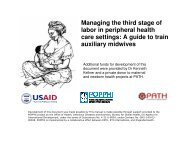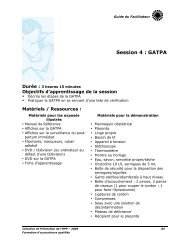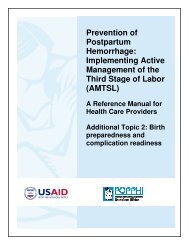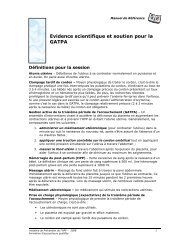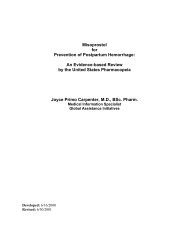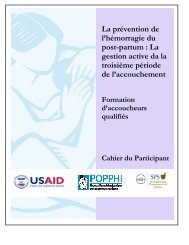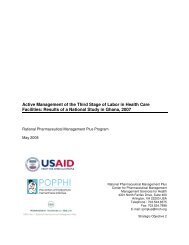Prevention of Postpartum Hemorrhage: Implementing ... - POPPHI
Prevention of Postpartum Hemorrhage: Implementing ... - POPPHI
Prevention of Postpartum Hemorrhage: Implementing ... - POPPHI
Create successful ePaper yourself
Turn your PDF publications into a flip-book with our unique Google optimized e-Paper software.
18) The umbilical cord should be cut:a) As soon as possible after birth <strong>of</strong> the baby to facilitate AMTSL and immediatenewborn careb) Immediately after birth <strong>of</strong> the baby if the newborn requires resuscitationc) After the placenta is delivered to ensure transfer <strong>of</strong> blood to the newbornd) At a time determined by cultural beliefsMonitoring during the immediate postpartum period19) Ms. A gave birth to a healthy baby girl one hour ago. You managed the third stage <strong>of</strong>labor actively, the placenta was complete, and she had no perineal or vaginallacerations. How <strong>of</strong>ten should you monitor her uterus and vaginal bleeding duringthe second hour after delivery <strong>of</strong> the placenta?a) Every 10 minutesb) Every 15 minutesc) Continuouslyd) Every 60 minutes20) Baby A was born at 3:15 pm. She did not require resuscitation and has alreadybegun breastfeeding. It is now 6:30 pm. How <strong>of</strong>ten will you monitor hertemperature?a) Continuouslyb) Every 15 minutesc) Every 30 minutesd) Every 60 minutes22 <strong>Prevention</strong> <strong>of</strong> <strong>Postpartum</strong> <strong>Hemorrhage</strong>: <strong>Implementing</strong> Active Management <strong>of</strong> the Third Stage <strong>of</strong> Labor


